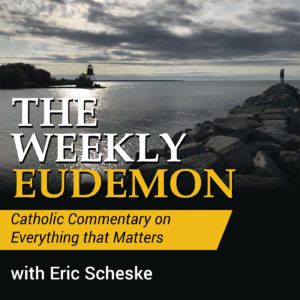Episode 70

New Episode Released
1000 AD to 1200ish: Seljuk Turks, Crusades, St. Francis, Cluny
We left off last week at the end of the 900s. Europe was taking shape. It was mostly Catholic, Russia having converted officially in 988.
With a notable exception in Hungary.
Hungary, you may recall, is where the fierce Steppe peoples, the Magyars, had settled after getting beaten by Otto I. Many Magyars had accepted baptism; many hadn't. In 1000, Stephen I, a Christian, won a civil war against the pagans and Hungary came under the Roman Catholic Church.
With a few small exceptions, all of Europe was now Catholic. Two of the three existential threats–Vikings and Magyars–were gone. The third, the Muslims, were fading away, wrapped in fierce internal wars between the Abbasids (Sunni) and Fatimids (Shiites). The Dark Ages were over.
In central and western Europe, you had three young kingdoms: The Capetians in France, William the Conquerer in England, the Holy Roman Emperor in Germany.
William the Conqueror. Aka “William the Bastard.” And “William of Normandy.” In 1066, William won the Battle of Hastings. William was a French vassal of the Capetians, thereby tying together the French and English for the next couple of hundred years, which would bring us things like the Hundred Years war, Joan of Arc, etc. It inextricably tied together the French, the English, and the Nordic. William was a French vassal, but he was Norman . . . The only Viking settlement on the continent.
Around this time, Europe was also getting wealthy again. Money had actually returned, after the Vikings had taken all of it. The European population was surging: no more attacks, so not losing people to slavery. No plagues. Improved agricultural techniques, like the horse harness that allowed them to use horses instead of oxen for plowing.
The Byzantine Empire was undergoing a revival at this time under Basil II, who was a very capable emperor, to say the least, and was also well-served by the Muslim internal wars.
But then came the Seljuk Turks. This was a bad thing. These are yet another Steppe peoples. Every few hundred years, Steppe peoples overflow out of the Steppes, which are highly rugged and breed fierceness, and invade Europe. The Huns, the Magyars, the Mongols.
And the Seljuk Turks.
These guys were among the baddest of the bad. They had served as hired mercenaries for years. The Byzantine Emperor for awhile thought he might be able to convert them to Orthodox Christianity, which would've been freakin' huge, but he lost the great cultural battle: Vodka or Hashish.
There's a line of historical thinking that said peoples on the eastern edge of Europe into the Steppes converted based on whether vodka or hashish was popular in the their culture. Russians drank vodka: they converted to Orthodox Christianity. Seljuk Turks holy men, Shamans, used hashish. They became Muslim. The Seljuk Turks “threw in” with the Abassids/Sunnis and defeated the Fatimids, then a branch of them invaded Asia Minor in the later 1000s, taking over large swaths of it, prompting the Byzantine Emperor in Constantinople to call for help.
And so started the Crusades.
The West was strong and itching to go on the offensive after 400 years of playing defense. It would be the first offensive launched outside of Europe since the Roman Empire.
So, in 1095, the Crusades start.
There would eight total major crusades.
So what else during this time period? St. Francis and St. Dominic. Remember that Europe was growing wealthy. It prompted a backlash of sorts. That backlash was St. Francis and St. Dominic. Mendicant orders, dedicated to holy poverty. Etch 1209 into your brain: the year St. Francis started the Franciscans.
This was also the time when the papacy started getting reformed. The 800s and 900s weren't kind to papal history for Catholics. Those are the years when some shocking atrocities took place and decadence made its way to the Pope. The Holy Roman Empire saved papacy from Italian decadence, with the Emperor asserting considerable influence on who would be Pope and that helped bring in good men to the papacy. Men who cared a lot about religious and spiritual matters. Men like Gregory VII, who would fight Henry IV on the Investiture Crisis.
I can't go into it here, but etch 1077 into your heads. That was the high mark of the battle over whether the Emperor could appoint bishops. He can't. But it was merely the current ongoing battle that had been going on since Constantine converted and called the first Ecumenical Council. It's the intertwining between secular and spiritual, a thing that is simply unavoidable in a sacramental world (body and soul; mundane and spiritual). It causes constant problems. When society is religious, it takes on enormous political importance. When society is irreligious, like ours, it takes on small political problems, like Pope Francis and his relentlessly leftist agenda that, thankfully, he can't implement because of his limited political influence and the Holy Spirit reigns him in from committing heresy.
This was also the era of Cluny. In 910, a nobleman founded a Benedictine monastery in Cluny, France. He stipulated, basically, that it would be free from that secular-spiritual problem: No lay or religious would have an authority over it, except the Pope. But since the Pope was on the other side of the Alps, that basically meant Cluny was independent. This was huge. As was the fact that its first abbots were capable and holy. It soon reformed monasteries throughout Europe and became highly influential in all things, with political leaders seeking guidance from its monks. By 1050, it's estimated that 1,450 monasteries were directly dependent on Cluny in some way or were reformed by Cluny.



